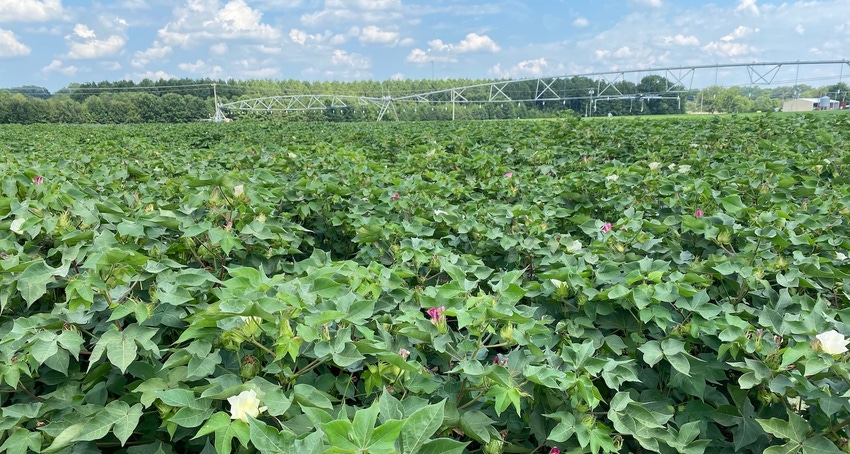
It’s a question Avat Shekoofa says she hears quite often. “Why do the crops under my irrigation pivot not perform any better (or sometimes not as good) as my dryland crops?”
“That’s a hard question to answer because the situation is different for each farm, but it goes back to knowing the soil water holding capacity of your farm as well as the water needs of the crop you’re growing” said Shekoofa, a crop physiologist with the University of Tennessee. “It’s very important to understand the growth stages where water is most critical and irrigate accordingly.”
Shekoofa has evaluated crop cultivars for drought tolerance as well as the efficacy of irrigation structure and timing for the past five years at the West Tennessee Research and Education Center in Jackson. One thing she’s observed in cotton production is that overwatering can be very detrimental to the crop and could explain some producer disappointment in their irrigated cotton.
“In some situations, it could be that because of our soil types, we’re exposing those crops to long periods of saturation,” Shekoofa said. “Ideally, our soils would allow an inch of water to be applied at one time, but we often see runoff at much lower rates in Tennessee soils, and subsequently, producers are forced to run the pivot several times to get the amount of water they need on the crop.”
She also stresses that turning the water on at the right time is key to maximizing yields. Cotton plants are particularly susceptible to water deficit stress during the first 30 days of boll development immediately following flowering.
“Within a silt loam soil, we have consistently seen what we call a semi-irrigation regime work best in cotton,” Shekoofa said. “Semi-irrigation involves not irrigating until first bloom. At that point we advise applying 0.5 inch of water per week from first bloom to peak bloom, and then 1 inch per week from peak bloom to open boll.”
“This process gave us improved lint yield over rainfed cotton as well as cotton with irrigation protocol of 1 inch of water per week beginning at early square and increasing to 1.6 inches at first bloom.”

In 2020, the fully irrigated treatment in Shekoofa’s irrigation timing study was replaced with sensor-based irrigation. The sensor-based irrigation treatment followed the same pattern of semi-irrigation, but water was withheld until the sensors read -70 to -80 kilopascals, a pressure potential measurement of soil water.
“Based on averages from our research, that was a good time to initiate irrigation, but that’s not a blanket recommendation for everyone,” Shekoofa cautions. “Different soil types will respond differently and different crops will have different irrigation initiation levels.”
Soil moisture sensors are one tool that can help producers appropriately schedule irrigation by providing a measurement of water available to the plant, but they can be pricey to install. Shekoofa advises to not rely solely on any one tool.
“Remember the active root zone of the crop determines the depth at which to place the soil water sensors. Type of crop, soil depth and growth stage largely determine the active roote zone. The range to consider is 6 to 36 inches. In most cases two depths will be considered for soil water sensors installation.”
“Sensor knowledge is helping producers make adjustments, but we should still take into account documented rainfall and plant growth stages to make to optimize our irrigation decisions.”
“Agriculture irrigation accounts for nearly 80% of groundwater use in the United States. We are relying on water a lot, but learning that we can sometimes do more (or at least just as much) with less,” Shekoofa said. “We need to always be careful of the amount of water we’re using. It’s critical to the planet.
About the Author(s)
You May Also Like






